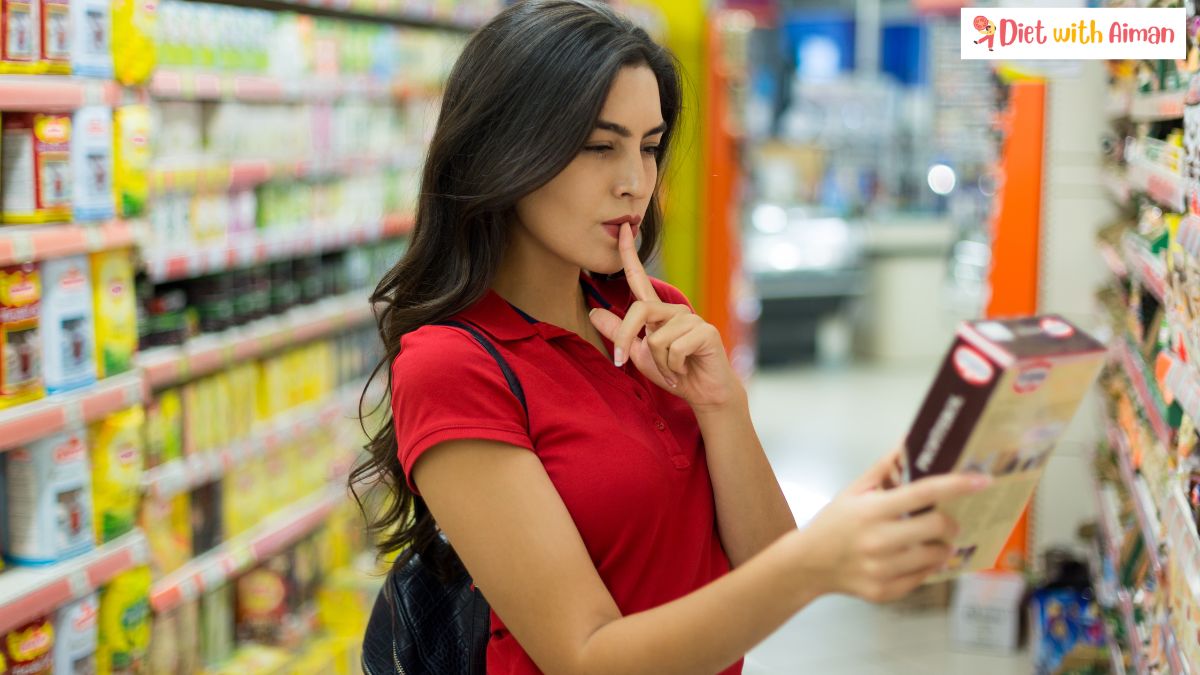Ever feel overwhelmed by the sea of information on food labels? You’re not alone! Deciphering those tiny words and cryptic symbols can feel like solving a puzzle. But fear not, grocery warriors! This article equips you with the knowledge to understand food labels effectively, making informed choices about the food you put on your plate.
Serving Size vs. Calories per Serving: Know the Difference
First things first, let’s tackle those serving sizes. They’re listed near the top of the label in bold. This number tells you how much of the food is considered one serving, but it’s not necessarily a recommendation of how much you should eat.
Now, look at the “calories per serving” right next to it. This tells you how much energy you’ll get from consuming that specific serving size. If you devour the entire bag of chips (we’ve all been there!), remember to multiply the calories per serving by the number of servings you actually ate.
Deceptive Labels: Don’t Fall for the “Free” Claims
Hold on a minute! That label says “fat-free” – does that mean it’s healthy? Well, not necessarily. While the product may be fat-free, it might be loaded with added sugar or unhealthy substitutes to maintain flavor and texture. The same goes for “low-sugar” claims. Check the ingredients list – sometimes manufacturers sneak in hidden sugars under different names.
Ingredients List: Your Secret Weapon
The ingredients list is your best friend when it comes to understanding food labels. Ingredients are listed in descending order by weight, so the first few items make up the bulk of the product. Focus on whole, recognizable ingredients like fruits, vegetables, and whole grains. The longer the list and the more unrecognizable words it contains, the more processed the food might be.
Comparing Like with Like: Choosing the Healthier Option
So, you’re comparing two similar products. How do you choose the healthier option? Here are some tips:
- Compare Serving Sizes: Don’t be fooled by packages with a lower calorie count if the serving size is smaller.
- Scan the Macronutrients: Look at the grams of fat, carbohydrates (including fiber and sugar), and protein. Choose options lower in unhealthy fats and added sugars, and higher in fiber and protein.
- Check the Added Sodium: Too much sodium can contribute to high blood pressure. Aim for products lower in sodium content.
Remember: Food labels are a valuable tool, but they’re not the whole story. Use them alongside your knowledge of healthy eating to make informed choices. If you have any doubts, consult a registered dietitian for personalized guidance.
Happy label deciphering and healthy eating!
Feeling overwhelmed by all this information? Want to take a deeper dive into healthy eating habits tailored to your needs? Subscribe to my newsletter for exclusive tips, recipes, and nutrition advice delivered straight to your inbox! You can also book a consultation with me to discuss your specific goals and create a personalized healthy eating plan. Let’s empower you to make informed choices and enjoy a happier, healthier you!



